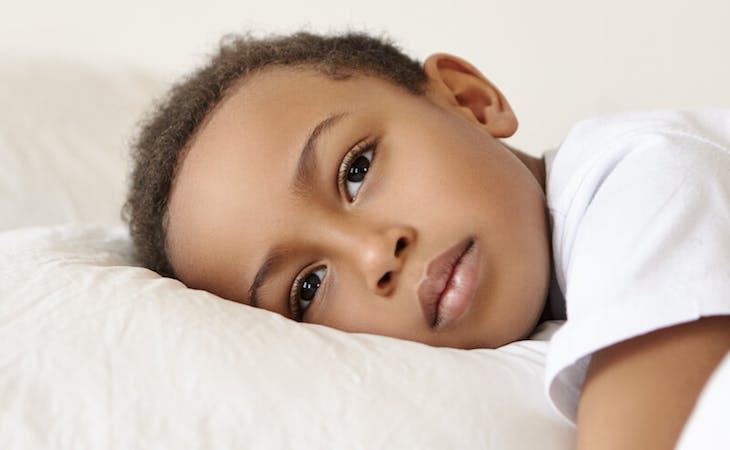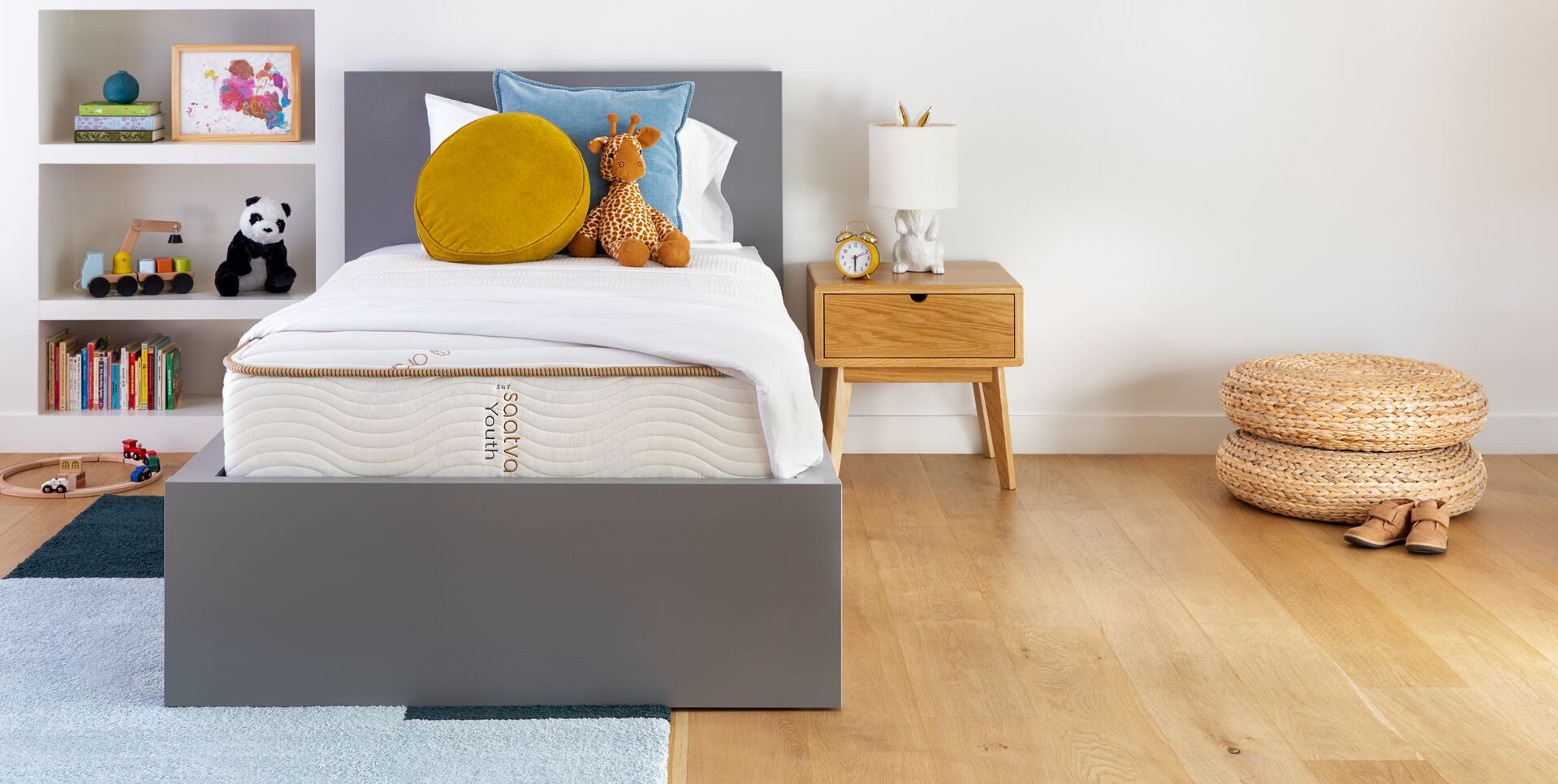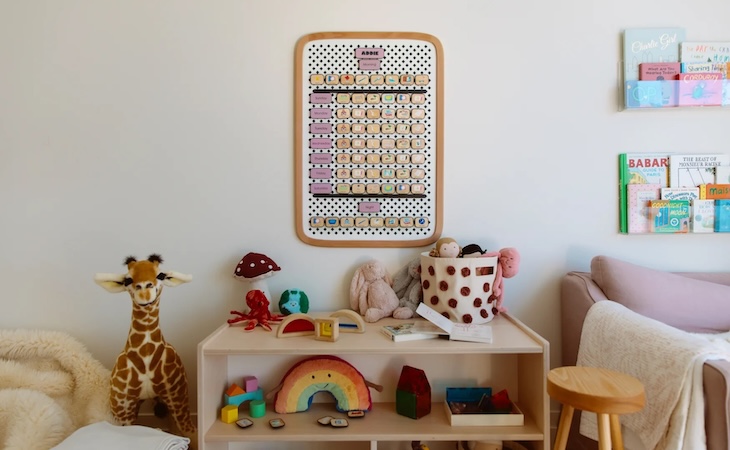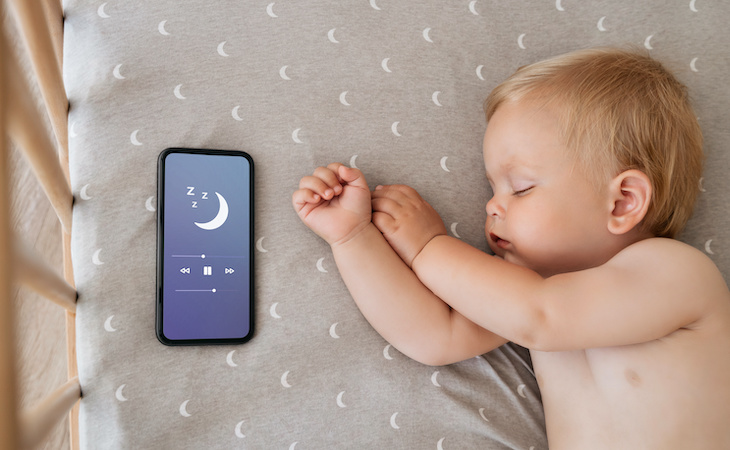Sleep disorders are surprisingly common among children. According to research published in American Family Physician, up to 50% of children will experience sleep problems at some point, which can lead to side effects like irritability and learning difficulties.
The good news is that kids will grow out of most of these sleep issues, and the sleep disorders that affect children are typically fairly easy to treat until that occurs. Here are five of the most common sleep disorders in children and what you can do to help your child until they outgrow them.
Behavioral insomnia of childhood
According to Lynelle Schneeberg, PsyD, pediatric sleep psychologist and author of Become Your Child’s Sleep Coach, the most common sleep disorder in children is behavioral insomnia of childhood.
“There are two types: sleep onset association type and limit-setting type,” she explains. “The first type means that a child needs a parent’s help to fall asleep (feeding to sleep, rocking to sleep, having a parent lie down with a child), and the second type means that a child makes lots of requests after lights out.”
Often, parents will grant a child’s every wish, hoping that the child will finally fall asleep when all the requests are fulfilled. But by doing this, she says, parents are rewarding “wake behaviors” and not encouraging sleep. A bedtime that’s too early or parents who don’t set limits can also contribute to the development of behavioral insomnia.
So what are some solutions parents can follow?
“The solution for the first type is to put a gentle plan in place to help a child learn to self-soothe to sleep,” Schneeberg says. This plan can include steps to teach your child to fall asleep independently—no help from Mom or Dad needed. This is called sleep training. To get your child to sleep on their own, make sure to have a consistent routine with only a few steps. Then, make sure your child has a reading light and book. Once you’re done with the bedtime routine, tell them to look at their book until they’re sleepy. This helps take the pressure off having to fall asleep on command.
The second type of behavioral insomnia can be improved with something Schneeberg terms “bedtime tickets.” Decorate a few three by five index cards and leave two of them on your child’s bedside table each evening. Remind your child that after they’ve been tucked in, they’ll need to use a ticket for any other request—and the tickets expire in 10 minutes. Unused tickets can be traded for a small reward in the morning. This is an excellent way to help your children overcome limit-setting behavioral insomnia and get a good night’s sleep.
Related: A sleep coach’s 5-step plan for getting your kids to sleep
Sleepwalking
Sleepwalking is very common among children. It typically peaks at age 8, and kids normally outgrow this sleep disorder by the time they reach 13. Most kids sleepwalk an hour or two after falling asleep and might walk for a few seconds up to 30 minutes.
If your child sleepwalks, it’s important to put measures in place to ensure their safety. Children who sleepwalk aren’t aware of what they’re doing and may get hurt from falling down stairs or wandering outside. Lock all windows and doors and put a gate at the top of the stairs. Store dangerous objects out of reach, and before going to bed each night, clear the floor so your child won’t trip.
You can also take preventive measures to stop sleepwalking before it ever happens—such as keeping your child on a regular sleep schedule, considering whether they’re on any medications that may cause sleepwalking, and doing your best to keep their stress level low.
Night terrors
“Night terrors are very common. [They] peak at age 3-4,” Schneeberg says. “Parents just need to keep a child safe and make sure the child gets enough sleep.”
Night terrors (which are distinct from nightmares) are dreams that are difficult to wake up from. If experiencing a night terror, a child may thrash around in bed, cry out, or sit upright. Night terrors are generally inherited, meaning this disorder runs in families. Children who experience night terrors typically outgrow them.
Most kids have night terrors two to three hours after falling asleep. If you notice that your child normally has a night terror at the same time each night, try scheduled awakenings. Go to your child’s room 10-15 minutes before you’re expecting the night terror and softly say their name until they change position. Doing this consistently for a few weeks can help night terrors subside. (Find out if melatonin can help your child sleep better.)
Bedwetting
Bedwetting is very common in young children and most kids will outgrow it. In fact, Schneeberg doesn’t treat bedwetting until age 7 because most children outgrow it by then.
For children around the age of 5, be patient if their bladder control hasn’t fully developed. Use simple lifestyle changes such as limiting your child’s fluid intake after dinner.
If your child is still wetting the bed at 7 years old or older, speak with a sleep physician. Treatment may include a bedwetting alarm or making a point to visit the bathroom regularly during the day. Medication might also be prescribed.
Related: 5 ways to keep anxiety from ruining your child’s sleep
Sleep apnea
Sleep apnea, a condition where a person stops breathing in their sleep, is common in adults. But children can experience sleep apnea too.
“I recommend a sleep study for any child who is about to be diagnosed with ADHD or put on medications for this,” says Schneeberg. “Undiagnosed sleep apnea can look like ADHD since poor quality sleep can cause behavioral and attentional issues.”
Symptoms of sleep apnea in children include snoring, mouth breathing, daytime sleepiness, trouble focusing, and bedwetting. The condition can be diagnosed through a sleep study, and treatment may include medications, mouthpieces to be worn during sleep, a CPAP, or removing the tonsils and adenoids.
“Kids may or may not outgrow this,” Schneeberg explains. “If a parent is worried about how their child’s breathing sounds at night, they should always talk to their pediatrician and possibly also to a sleep physician.”





